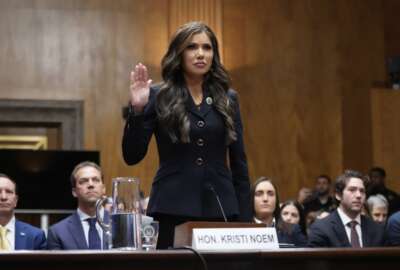White House shapes intellectual property protection ahead of year-end deadline
The White House is updating its 2010 trade secret theft and counterfeit product prevention strategy. The new plan will incorporate public input, which the...
wfedstaff | April 17, 2015 4:00 pm
By Esther Carey
Special to Federal News Radio
The Obama administration is making progress in updating its two-year-old strategic policy to protect the country’s global competitiveness and national security.
The increasing theft of trade secrets can affect various sectors of the United States, said Victoria Espinel, the White House’s Intellectual Property Enforcement Coordinator, in an interview with The Federal Drive with Tom Temin and Emily Kopp. Another source of concern is the possibility of counterfeit parts in government acquisitions.
By law, the new defensive plan must be completed by the end of the year. And Espinel’s office is still soliciting public input. Gathering information is a critical step in the development of a plan, she said.
“There’s a wide range of stakeholders that care about intellectual property enforcement issues,” Espinel said. “That includes labor unions, public interest groups, obviously the industries that are affected and the public at large. We want to know what people are thinking, what they are worried about and what their suggestions are.”
The administration is still in the process of figuring out what the best strategy should be in response to the current issues, Espinel added.
The current strategy, dating from 2010, was based on six guiding principles including increasing government transparency and ensuring effective and coordinated efforts. Many of the 33 action items based on those ideals have been accomplished, Espinel said. Her team is revisiting those principles to determine if they still make sense.
At the same time, the administration is drafting new procurement rules to protect the government from purchasing counterfeit products. The goal is to create rules that will work well for all agencies without creating undue burdens for suppliers, Espinel said.
Espinel said that the review is progressing but there is still more to consider. Intellectual property theft and counterfeiting occur in both the physical realm and the cyber realm, Espinel said, and each requires a different strategy.
“It is important to get this right,” she said. “We need to think through all of the ideas to come up with an effective approach.”
Esther Carey is an intern at Federal News Radio.
RELATED STORIES:
Agencies, vendors ramping up to fight supply chain cyber threats
Copyright © 2025 Federal News Network. All rights reserved. This website is not intended for users located within the European Economic Area.





